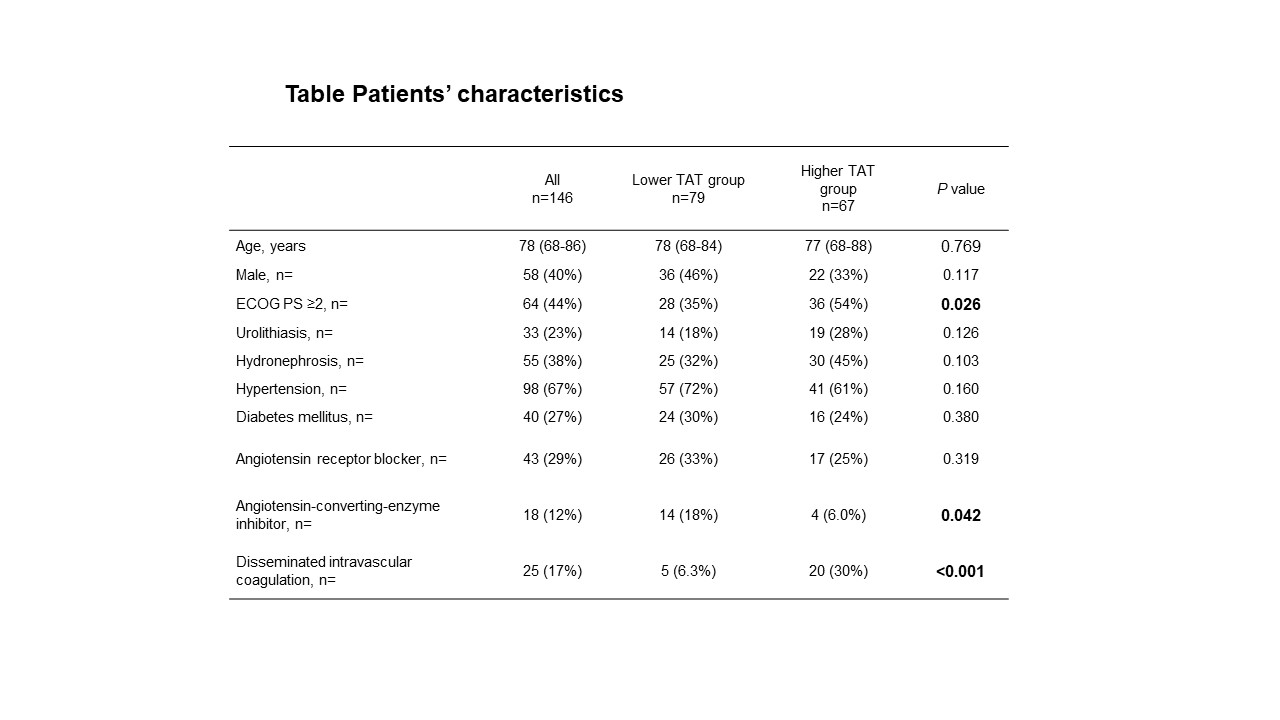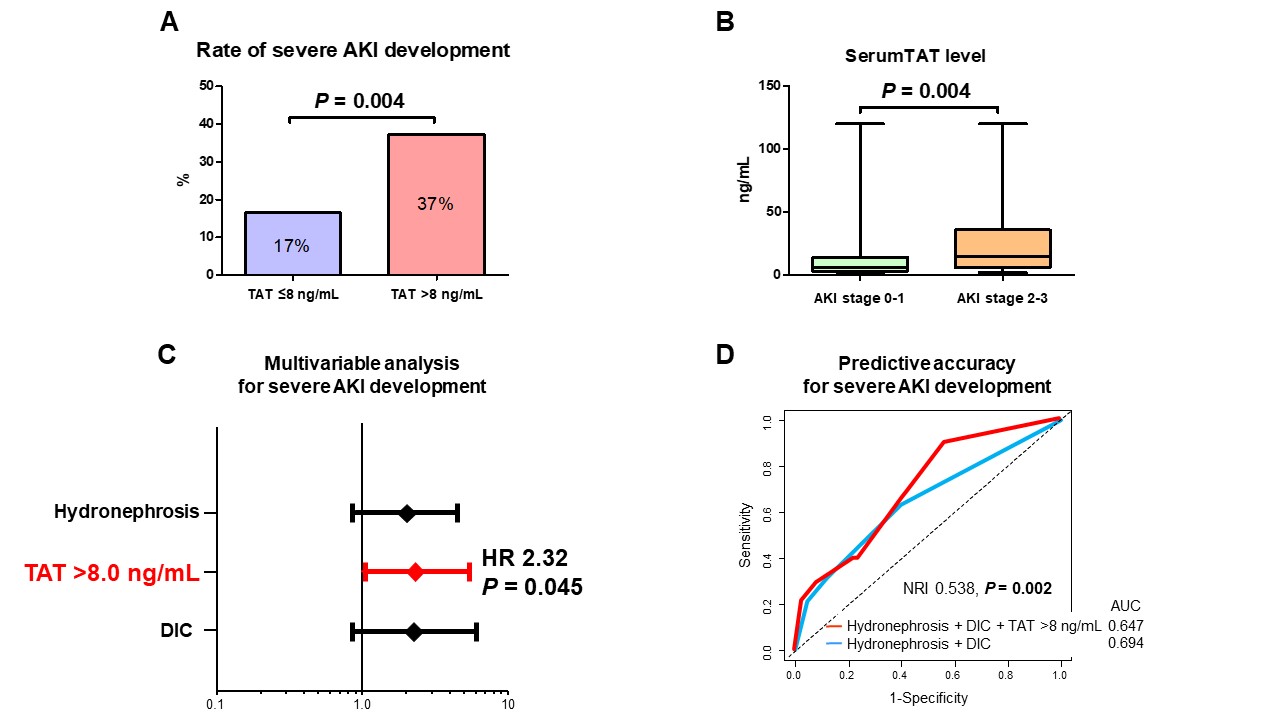Back
Poster, Podium & Video Sessions
Podium
PD32: Infections/Inflammation/Cystic Disease of the Genitourinary Tract: Kidney & Bladder III
PD32-08: Elevated thrombin-antithrombin complex is a risk factor of severe acute kidney injury in patients with urological sepsis
Saturday, May 14, 2022
4:40 PM – 4:50 PM
Location: Room 255
masaki momota*, Hirosaki, Japan
- MM
Podium Presenter(s)
Introduction: Elevated thrombin-antithrombin (TAT) complex indicates excess thrombin production and serves as a molecular marker of activated coagulation. The aim of this study was to investigate the impact of elevated TAT complex on the development of severe acute kidney injury (AKI) in patients with urological sepsis.
Methods: We prospectively collected the data from 146 patients with urological sepsis between March 2017 and March 2019. AKI was defined according to the KDIGO criteria. Patients were divided into two groups: lower TAT group (serum TAT complex =8 ng/mL) and higher TAT group (serum TAT complex >8 ng/mL). Multivariable logistic regression analysis was performed to evaluate the impact of elevated TAT complex on the severe AKI development. We evaluated predictive accuracy of elevated TAT complex for the severe AKI development using the receiver operating characteristic curve and compared using net reclassification improvement (NRI).
Results: Median age was 78 years old in this cohort. Of 146 patients, 67 were classified as a higher TAT group and 38 developed to severe AKI (AKI stage 2-3). Rate of severe AKI development in the higher TAT group was significantly higher than that of the lower TAT group (Fig. A; P = 0.004). Serum TAT level in patients with severe AKI was significantly higher than that in patients with stage 0-1 AKI (Fig. B; P = 0.004). In multivariable analysis, serum TAT complex >8 ng/mL was selected as a significant independent risk factor for severe AKI development (Fig. 3; hazard ratio 2.319, P = 0.045). The predictive accuracy of hydronephrosis plus DIC plus elevated TAT level for severe AKI development was significantly improved compared with hydronephrosis plus DIC (Fig. D; NRI 0.538, P = 0.002).
Conclusions: Elevated thrombin-antithrombin complex is a risk factor of severe acute kidney injury in patients with urological sepsis.
Source of Funding: nothing


Methods: We prospectively collected the data from 146 patients with urological sepsis between March 2017 and March 2019. AKI was defined according to the KDIGO criteria. Patients were divided into two groups: lower TAT group (serum TAT complex =8 ng/mL) and higher TAT group (serum TAT complex >8 ng/mL). Multivariable logistic regression analysis was performed to evaluate the impact of elevated TAT complex on the severe AKI development. We evaluated predictive accuracy of elevated TAT complex for the severe AKI development using the receiver operating characteristic curve and compared using net reclassification improvement (NRI).
Results: Median age was 78 years old in this cohort. Of 146 patients, 67 were classified as a higher TAT group and 38 developed to severe AKI (AKI stage 2-3). Rate of severe AKI development in the higher TAT group was significantly higher than that of the lower TAT group (Fig. A; P = 0.004). Serum TAT level in patients with severe AKI was significantly higher than that in patients with stage 0-1 AKI (Fig. B; P = 0.004). In multivariable analysis, serum TAT complex >8 ng/mL was selected as a significant independent risk factor for severe AKI development (Fig. 3; hazard ratio 2.319, P = 0.045). The predictive accuracy of hydronephrosis plus DIC plus elevated TAT level for severe AKI development was significantly improved compared with hydronephrosis plus DIC (Fig. D; NRI 0.538, P = 0.002).
Conclusions: Elevated thrombin-antithrombin complex is a risk factor of severe acute kidney injury in patients with urological sepsis.
Source of Funding: nothing



.jpg)
.jpg)